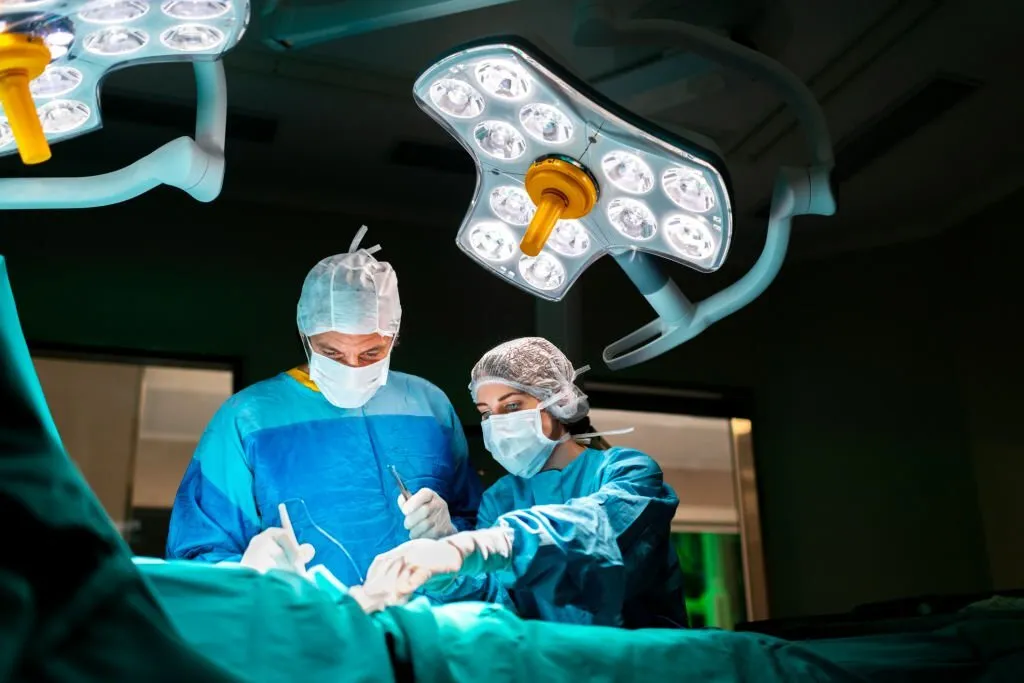Piles, or haemorrhoids, are swollen blood vessels in the rectal area. They can be internal (inside the rectum) or external (under the skin around the anus). Internal piles are generally not visible, as they form inside the rectum – an area where poop collects before coming out. Symptoms of internal piles include painless bleeding during bowel movements, itching or irritation in the anal area, and feeling fullness or discomfort. External piles are visible around the anus and may appear as small, swollen lumps. They can cause pain, itching, and discomfort.
While internal haemorrhoids are completely curable in the early stages with lifestyle changes and diet plans. External haemorrhoids need immediate medical attention because they can cause extreme discomfort in everyday life. If you want immediate relief, you must know about the procedures for treating piles. This article will also enlighten you about the recovery process after piles surgery.
What Are The Different Procedures For Treating Piles?
Surgical piles treatments aim to remove swollen blood vessels around the anus and rectum. These surgeries need the assistance of a colorectal surgeon and are guided by experts in coloproctology. Here are different procedures for treating piles and their recovery process.
- Sclerotherapy
Sclerotherapy for treating piles or haemorrhoids involves injecting a sclerosing agent into the hemorrhoidal tissue. The solution causes the blood vessels within the haemorrhoid to shrink, reducing its size and symptoms. The procedure is typically performed in an outpatient setting and does not require anaesthesia. Multiple injections may be given during the session. Sclerotherapy effectively treats internal haemorrhoids and is relatively safe with minimal side effects.
The Recovery Process after Sclerotherapy
Some may experience mild discomfort or bleeding, but this usually subsides within a day or two. You must follow the doctor’s instructions regarding post-procedure care and maintain good bowel habits and hygiene.
- Rubber Band Ligation
Rubber Band Ligation (RBL) is a common treatment for internal piles/haemorrhoids. It involves placing a small rubber band at the base of the haemorrhoid, cutting off its blood supply. Over time, the haemorrhoid shrinks and falls off, usually within a week. RBL is typically performed in a doctor’s office without anaesthesia. Mild discomfort or bleeding may occur temporarily after the procedure. Multiple sessions may be required for the complete resolution of the haemorrhoids.
The Recovery Process after Rubber Band Ligation
Following Rubber Band Ligation (RBL) for piles, patients may experience mild discomfort or a feeling of fullness in the rectum. Some bleeding or spotting may occur for a few days. Maintaining good bowel habits, staying hydrated, and following the doctor’s specific aftercare instructions are recommended.
- Hemorrhoidectomy
Hemorrhoidectomy is a surgical procedure used to treat severe or recurring haemorrhoids. It involves the removal of hemorrhoidal tissue through various techniques such as cutting, excision, or stapling. The procedure is performed under anaesthesia. Patients may experience pain, swelling, and discomfort during healing.
The Recovery Process after Hemorrhoidectomy
The recovery process for Hemorrhoidectomy includes stool softeners, pain medication, and proper post-operative care usually prescribed to aid in recovery.
- Stapled Hemorrhoidopexy
Stapled Hemorrhoidopexy, also known as PPH (Procedure for Prolapse and Hemorrhoids), is a surgical procedure used to treat prolapsed internal haemorrhoids. It involves using a circular stapling device to reposition and secure the hemorrhoidal tissue’s original position within the rectum. This procedure aims to restore normal blood flow and reduce prolapse. It is typically performed under anaesthesia and generally results in less post-operative pain compared to a traditional hemorrhoidectomy.
The Recovery Process after Stapled Hemorrhoidopexy
Typically, patients can expect mild to moderate pain or discomfort in the rectal area for a few days. There may be some bleeding or discharge as well. You must follow the doctor’s instructions regarding pain management, hygiene, and dietary recommendations for quicker recovery.
- Laser Surgery
Laser surgery for piles is a minimally invasive procedure that uses laser energy to treat haemorrhoids. It is the most commonly used procedure for treating piles. The laser is directed at the hemorrhoidal tissue, causing it to shrink and seal off the blood vessels, leading to the resolution of symptoms.
The Recovery Process after Laser Surgery For Piles
Recovery time after laser surgery for piles is generally quicker compared to traditional surgical methods, and patients can typically resume normal activities immediately. It is essential to follow post-operative instructions provided by the doctor to ensure proper healing.
In Summary
Minimally invasive procedures are the best surgical treatments for piles. Most surgeries mentioned here are outpatient surgeries, and the recovery process after piles surgery is less painful and quicker. Smiles Hospital has a team of experts in coloproctology and has the highest number of colorectal cases treated in a single-speciality hospital in India.
Ready to bid farewell to piles and embrace a pain-free life? Take the first step towards relief and visit the Smiles Institute of Gastroenterology! Discover innovative treatments and expert guidance and reclaim your well-being. Call 8099008800 to book an appointment or visit: www.gastroenterology.smileshospitals.com.

